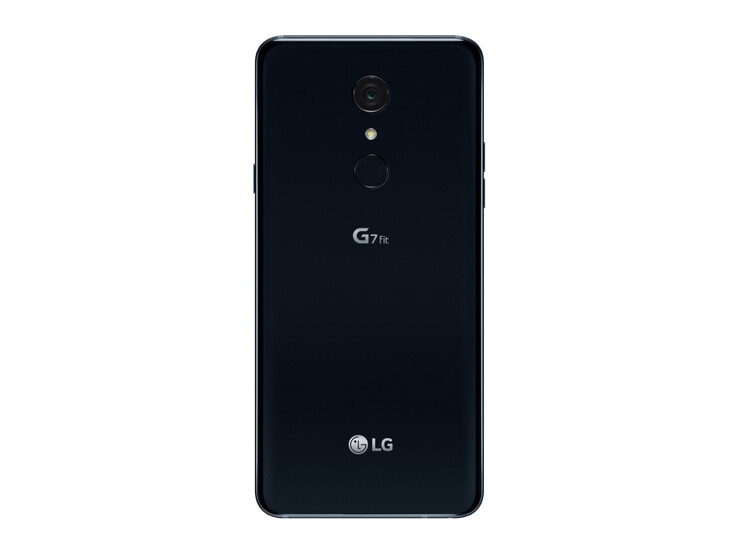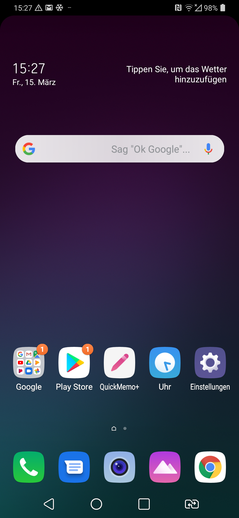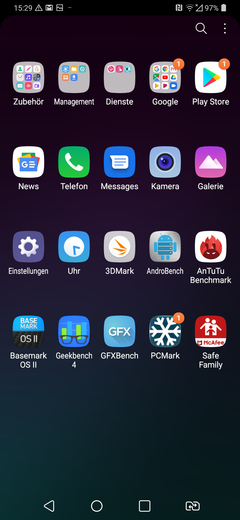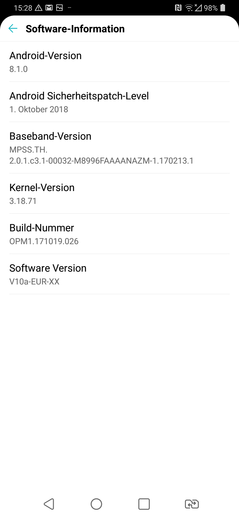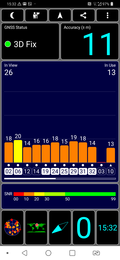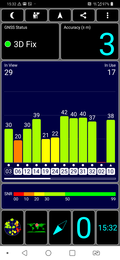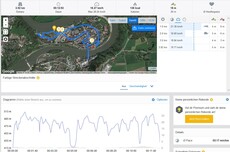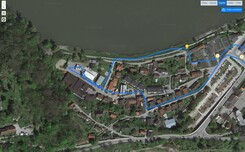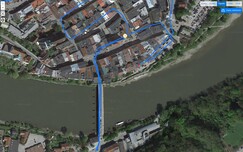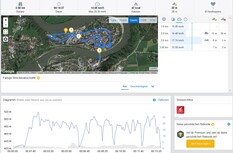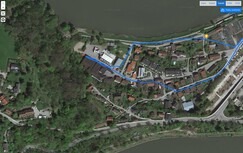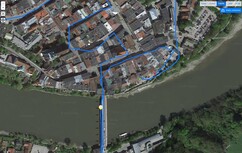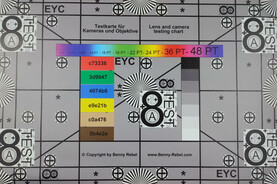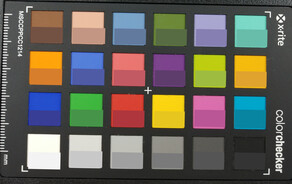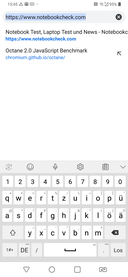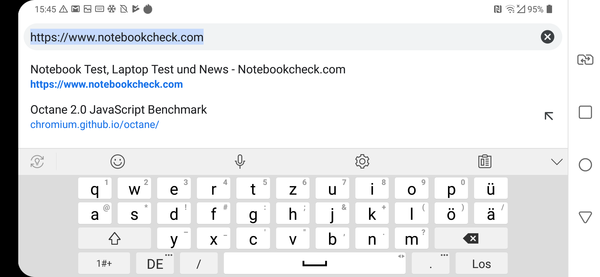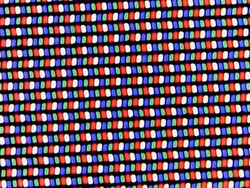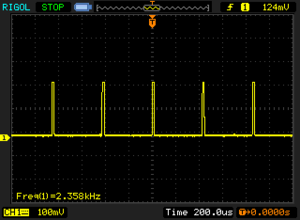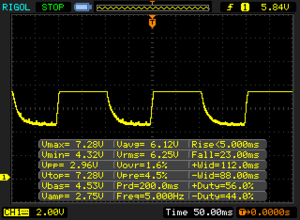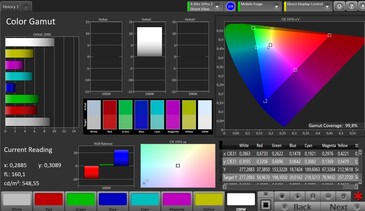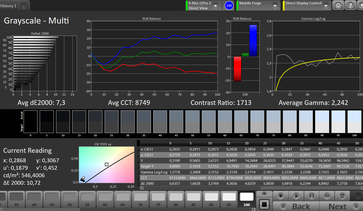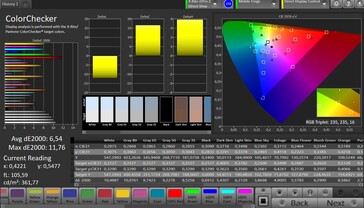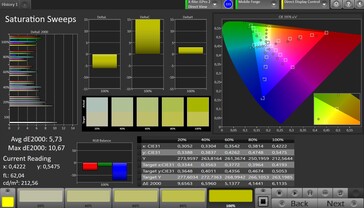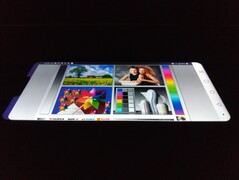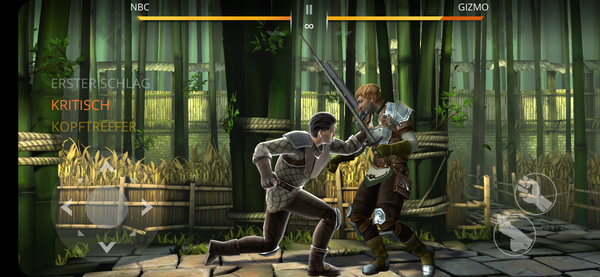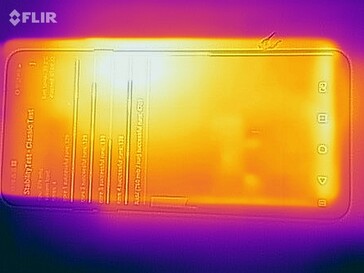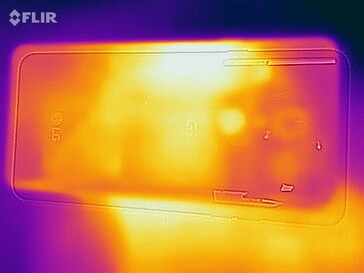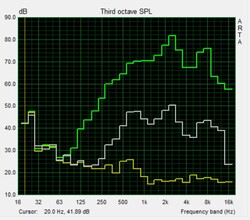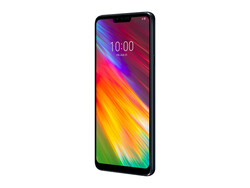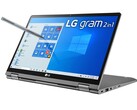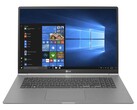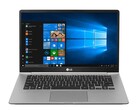LG G7 Fit Smartphone Review
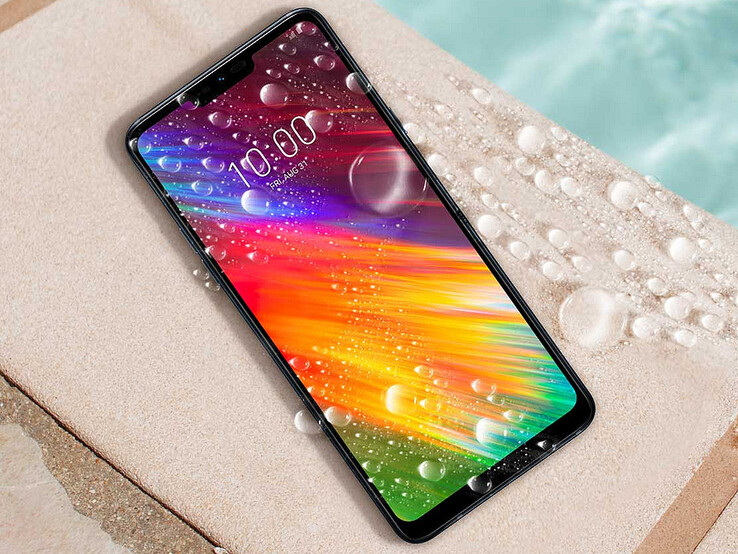
800 Euros (~$902) and more for a flagship smartphone is a lot of money by anyone’s account and does not offer good value for money. Midrange devices are quickly closing the gap to their flagship counterparts, but LG has sought to bridge the gap by introducing the G7 Fit, which blends some of the features that current flagships have with older flagship hardware. The G7 Fit looks like a modern flagship with its stylish design and bright display, but it only retails for 399 Euros (~$450). The compromises that LG has made to achieve this low price point are abundant though, not least of which that the South Korean company has equipped the device with a Qualcomm Snapdragon 821 SoC, which was first used in devices like the Google Pixel XL, the LG G6 and the OnePlus 3T back in 2016.
We have chosen to compare the G7 Fit against more recent smartphones, including the Honor 10 Lite, Moto G7 Plus and the Samsung Galaxy A7 (2018). Please keep in mind when reading this review that our three main comparison devices are between 49 Euros (~$55) and 149 Euros (~$167) cheaper than the G7 Fit.
Case
Firstly, the G7 Fit looks chic and stylish. The G7 Fit has a metal frame that is sandwiched between two pieces of glass, the combination of which is uncommon for smartphones at this price as OEMs tend to opt for a plastic frame or back to save on material costs. Additionally, LG has kept the bezels pleasingly narrow, which makes our review unit look more like an 800-Euro (~$902) smartphone than a 400-Euro (~$451) one. Gaps between materials are tight and even too, which only adds to the G7 Fit’s premium feel. Our review unit measures 153.2 x 71.9 x 7.9 mm and weighs 156 g, making it more compact than all our comparison devices. The small footprint allows our review unit to sit comfortably in our hands, and there is no camera bump either so the G7 Fit will lie flat on a table without wobbling about like many flagships do.
The glass back is a nice touch, but it comes with its drawbacks. On the one hand, our review unit becomes greasy too quickly for our liking and is prone to slipping not only from our hands but also from a desk or table that is not completely flat. Fortunately, LG certifies the G7 Fit as MIL-STD-810G1 compliant, which means that the device has successfully passed 14 environmental and climatic tests. However, no independent organisation or agency certifies MIL-STD-810 compliance, so take the certification with a pinch of salt.
The G7 Fit is IP68 compliant too, the first digit of which means that the device has passed an eight-hour test to determine that it is dustproof. Moreover, the G7 Fit is water-resistant for at least 30 minutes having been fully submerged in between 1 m and 3 m of water.
LG sells the G7 Fit only in black in Europe at the time of writing, which it markets as New Aurora Black. The device will also come in New Platinum Grey in other regions.
Connectivity
The choice of processor is rather surprising. LG has equipped the G7 Fit with a Snapdragon 821 SoC as we mentioned earlier, which turns three years old at the end of this year. The SoC should still be as powerful as newer midrange chips, but we suspect that it will be less economical too. LG complements the Snapdragon 821 with 4 GB of RAM, a decent amount by midrange smartphone standards and the same amount with which the company equipped the G7 ThinQ.
However, the G7 Fit has eMMC flash storage, which is much slower than the UFS 2.1 equivalent that OEMs are using in almost all their modern flagships. Our review unit has 32 GB of storage, but LG sells a 64 GB model in some markets too. The device supports up to 2 TB microSD cards should you fill up the internal storage and has dual-SIM functionality. You must choose between the two though because the G7 Fit has space for one or the other, but not both. Moreover, LG has equipped the device with a 3.5 mm jack and an NFC, the former of which has become almost extinct on flagship smartphones.
Software
While the G7 Fit earns points for its hardware, it ships with outdated software. Our review unit arrived with Android 8.1 Oreo, which is comparatively up to date by LG's standards. Worse still, LG has only released security patches up to October 2018, which were over five months old at the time of our tests. In our opinion, no midrange smartphone released in 2019 should be so hopelessly outdated out of the box.
LG has applied its UI atop of Android 8.1 Oreo, but the company only makes minor visual adjustments compared to stock Android, so it should not take too long to acclimatise to if you have used Android before.
Positively, our review unit has minimal bloatware. LG includes its Smart Doctor service and a few of its other apps along with the usual suite of Google apps. The G7 Fit has four navigation buttons by default though, with LG adding a button to quickly switch between SIM cards rather than having to dive into Settings.
Frustratingly, LG has opted to make the G7 Fit only Widevine DRM Level 3-certified, which prevents it from being able to stream content in HD from services like Amazon Prime Video or Netflix. You can still stream in standard definition, but LG would need to start shipping devices with Level 1 certification to enable HD streaming. We have no idea why the company chose to do this as it is free to have a device Level 1-certified and OEMs are unable to upgrade devices from Level 3 to Level 1 via a software update.
Communication & GPS
The G7 Fit has poor Wi-Fi performance even by midrange standards too. We tested our review unit with our Linksys EA8500 reference router and ran iperf3 Client Wi-Fi tests as we do with all the devices that we review. The G7 Fit averaged 155 Mb/s in the download test and 40.9 Mb/s in the upload test, which is both well below average and considerably slower than the Moto G7 Plus along with the Galaxy A7 (2018). Our review unit generally maintained below average Wi-Fi reception throughout our tests too, which is doubly disappointing.
| Networking | |
| iperf3 transmit AX12 | |
| Samsung Galaxy A7 2018 | |
| Motorola Moto G7 Plus | |
| Honor 10 Lite | |
| LG G7 Fit | |
| iperf3 receive AX12 | |
| Average of class Smartphone (last 2 years) | |
| Motorola Moto G7 Plus | |
| Samsung Galaxy A7 2018 | |
| LG G7 Fit | |
| Honor 10 Lite | |
By contrast, we had no issues with LTE reception nor did we with GPS either. Our review unit could even find a satellite fix indoors, which is not always the case with midrange smartphones. GPS accuracy improved from 11 metres to 3 metres when we tested it outdoors, which is also excellent even by modern flagship standards.
We also subjected our review unit to a bike ride to compare its GPS data against a professional navigation device, the Garmin Edge 520. The G7 Fit performed well overall but exhibited the same inaccuracies through tight corners that most smartphones do. In daily use, these should not be a problem though, and the G7 Fit is accurate enough for all general navigation tasks.
Telephone Features & Call Quality
LG also includes its suite of telephony apps, which are laid out clearly and are intuitive to use. We have only minor complaints about call quality too. The earpiece in our review unit can get loud and reproduced our call partner’s voice well. Moreover, the microphone picked out our voice clearly throughout our test calls, which is also the case when making hands-free calls.
LG has equipped the G7 Fit with its Boombox speaker technology, which resonates onto surfaces like tabletops and desks to deliver higher volumes and better low-frequency reproduction than traditional speakers would. Placing the G7 Fit on a hollow object like an acoustic guitar, for example, creates a surprisingly full-bodied sound with almost something that sounds like real bass.
Cameras
Cameras are one area in which LG has compromised to keep costs down. The G7 Fit has single front-facing and rear-facing cameras compared to the dual or triple sensors with which it has equipped the G7 ThinQ and V40 ThinQ.
The G7 Fit has a 16 MP rear-facing camera that has an f/2.2 aperture, which is comparatively narrow by modern smartphone standards. Hence, don't expect great things from the camera in low light. LG has also equipped the device with an 8 MP front-facing sensor that confusingly has an f/1.9 aperture, which should let in more light than the rear-facing one and thus perform better in low light.
The main camera takes passable photos in daily use, which look reasonably sharp with decent dynamic range. However, we noticed image noise in certain areas of most photos, such as in parts of the sky in scene 2. Our review unit’s low-light performance surprised us though, as demonstrated in scene 3. Although photos lack sharpness, the sensor and software compensate well against image noise to deliver a better than expected photo. Overall, scene 3 looks a bit warmer than in the photos taken by the Apple iPhone XS Max and OnePlus 6T, but this is acceptable considering how much more expensive those two devices are than the G7 Fit.
Interestingly, the front-facing camera produces considerably more image noise in darker areas than the rear-facing sensor, but it is still good enough for taking selfies. Both cameras take decent-looking videos too, but you will need a steady hand to prevent camera shake as neither sensor is optically stabilised.
We also subjected our review unit to further camera tests under controlled lighting conditions, which confirmed our initial observations. The G7 Fit captures our test chart sharply, but colours are oversaturated compared to ColorChecker reference colours. This is often the case with most smartphones though. Contrast levels gradually reduce towards the edges of our test chart picture too, but this is not overly concerning for a midrange smartphone.
Accessories & Warranty
The G7 Fit comes with the standard set of accessories for a midrange smartphone. Our review unit arrived with a pair of headphones that have a braided cable like those included with the LG V40 ThinQ, a charger and a corresponding USB Type-C cable. LG has thrown in a cleaning cloth too as it has done with most of its recent flagship smartphones dating back to at least the V20.
The G7 Fit comes with 24 months manufacturer’s warranty. Please see our Guarantees, Return Policies and Warranties FAQ for country-specific information.
Input Devices & Operation
The G7 Fit has a 10-point capacitive touchscreen as almost all modern smartphones do. The touchscreen reproduced our inputs quickly and accurately even into the edges of the display throughout our tests. Likewise, the accelerometer promptly adjusted the screen orientation if we rotated our review unit, while the fingerprint sensor consistently unlocked the device without delay.
The power button and volume rocker have decent pressure points too with crisp keystrokes. The buttons are on par with those that LG uses in its flagship devices in our opinion.
Display
One of the highlights of the G7 Fit is its display. LG has equipped the device with a 6.1-inch IPS panel that operates natively at 3120x1440, which equates to a pixel density of 563 PPI. However, the screen is not as sharp out of the box as LG reduces the resolution to 2340x1080 by default to extend battery life. You can further reduce the resolution to 1560x720 should you wish to minimise the power that the display draws. Please keep in mind that you must restart the device every time you change the resolution.
The star of the show is the display’s maximum brightness, which X-Rite i1Pro 2 recorded at 993 cd/m² across the entire panel and 1014 cd/m² at its centre. This is brighter than almost any smartphone and even brighter than the G7 ThinQ. However, The G7 Fit can only maintain its peak brightness for three minutes before dropping back to around 800 cd/m², which is still impressively bright.
Our review unit has a 0.46 cd/m² black value, which is higher than many IPS panels that we have tested. However, the black value is lower than our comparison devices that also have IPS panels, and it does not prevent the display from achieving an excellent contrast ratio, which we measure at 2,204:1. Only the colour accuracy is disappointing, which is well beaten by the Honor 10 Lite and Samsung Galaxy A7 (2018).
The 19.5:9 aspect ratio largely feels immersive too, although the G7 Fit’s broad notch may put off some people. Moreover, the device will show black bars with letterbox content shot in 16:9, but you should be able to zoom to fill the screen in apps like YouTube should you wish to view full-screen videos.
| |||||||||||||||||||||||||
Brightness Distribution: 92 %
Center on Battery: 530 cd/m²
Contrast: 2204:1 (Black: 0.46 cd/m²)
ΔE Color 6.54 | 0.5-29.43 Ø5
ΔE Greyscale 7.3 | 0.57-98 Ø5.3
99.8% sRGB (Calman 2D)
Gamma: 2.242
| LG G7 Fit IPS, 3120x1440, 6.10 | Honor 10 Lite IPS, 2340x1080, 6.21 | Samsung Galaxy A7 2018 Super AMOLED, 2220x1080, 6.00 | Motorola Moto G7 Plus IPS, 2270x1080, 6.20 | |
|---|---|---|---|---|
| Screen | 1% | 24% | -21% | |
| Brightness middle | 1014 | 467 -54% | 570 -44% | 537 -47% |
| Brightness | 993 | 446 -55% | 565 -43% | 525 -47% |
| Brightness Distribution | 92 | 89 -3% | 93 1% | 85 -8% |
| Black Level * | 0.46 | 0.58 -26% | 0.58 -26% | |
| Contrast | 2204 | 805 -63% | 926 -58% | |
| Colorchecker dE 2000 * | 6.54 | 1.5 77% | 1.5 77% | 6.41 2% |
| Colorchecker dE 2000 max. * | 11.76 | 4.5 62% | 3.6 69% | 10.86 8% |
| Greyscale dE 2000 * | 7.3 | 2.4 67% | 1.2 84% | 6.7 8% |
| Gamma | 2.242 98% | 2.22 99% | 2.07 106% | 2.099 105% |
| CCT | 8749 74% | 6387 102% | 6504 100% | 8310 78% |
* ... smaller is better
Screen Flickering / PWM (Pulse-Width Modulation)
| Screen flickering / PWM detected | 2358 Hz | ≤ 15 % brightness setting | |
The display backlight flickers at 2358 Hz (worst case, e.g., utilizing PWM) Flickering detected at a brightness setting of 15 % and below. There should be no flickering or PWM above this brightness setting. The frequency of 2358 Hz is quite high, so most users sensitive to PWM should not notice any flickering. In comparison: 53 % of all tested devices do not use PWM to dim the display. If PWM was detected, an average of 17900 (minimum: 5 - maximum: 3846000) Hz was measured. | |||
The G7 Fit uses pulse-width modulation (PWM) to regulate its screen brightness, which can cause eye strain and headaches for some people. Thankfully, the frequency, which we measure at 2,300 Hz when the screen is at 15% or below, should be high enough not to cause issues for most people.
Display Response Times
| ↔ Response Time Black to White | ||
|---|---|---|
| 26 ms ... rise ↗ and fall ↘ combined | ↗ 13 ms rise | |
| ↘ 13 ms fall | ||
| The screen shows relatively slow response rates in our tests and may be too slow for gamers. In comparison, all tested devices range from 0.1 (minimum) to 240 (maximum) ms. » 57 % of all devices are better. This means that the measured response time is worse than the average of all tested devices (21.5 ms). | ||
| ↔ Response Time 50% Grey to 80% Grey | ||
| 28 ms ... rise ↗ and fall ↘ combined | ↗ 5 ms rise | |
| ↘ 23 ms fall | ||
| The screen shows relatively slow response rates in our tests and may be too slow for gamers. In comparison, all tested devices range from 0.2 (minimum) to 636 (maximum) ms. » 32 % of all devices are better. This means that the measured response time is better than the average of all tested devices (33.7 ms). | ||
We also subjected the G7 Fit to further display tests with a photo spectrometer and CalMAN software to scrutinise its colour accuracy. Our additional tests confirmed our initial impressions and demonstrated that the display has only a slight blue tint to it, which is better than many midrange smartphones.
The G7 Fit is easy to use outdoors thanks to its impressively bright display. Even the brightest of summer suns should not prevent you from being able to read the display. Moreover, our review unit has stable viewing angles as many IPS panels do. We noticed no brightness, colour or image distortions even at acute viewing angles.
Performance
The Qualcomm Snapdragon 821 SoC is still a powerful chip, but it shows its age on closer inspection. Our review unit, for example, outscored our comparison devices in single-core benchmarks like Geekbench 4.3, but it finished dead last in the corresponding multi-core benchmark. It is also a mixed bag for the integrated Qualcomm Adreno 530 GPU. The GPU generally blew the chips in our comparison devices away in benchmarks like 3DMark, but it sometimes scored up to 20% less than the ARM Mali-G51 MP4 in the Honor 10 Lite. We doubt that most people would notice the difference in daily use though, with the G7 Fit handling anything that we threw at it with ease, just as our comparison devices do.
| GFXBench (DX / GLBenchmark) 2.7 | |
| T-Rex Onscreen (sort by value) | |
| LG G7 Fit | |
| Honor 10 Lite | |
| Motorola Moto G7 Plus | |
| Average Qualcomm Snapdragon 821 MSM8996 Pro (46 - 61, n=10) | |
| Average of class Smartphone (22 - 165, n=183, last 2 years) | |
| 1920x1080 T-Rex Offscreen (sort by value) | |
| LG G7 Fit | |
| Honor 10 Lite | |
| Motorola Moto G7 Plus | |
| Average Qualcomm Snapdragon 821 MSM8996 Pro (65 - 96, n=10) | |
| Average of class Smartphone (19 - 791, n=183, last 2 years) | |
| GFXBench 3.0 | |
| on screen Manhattan Onscreen OGL (sort by value) | |
| LG G7 Fit | |
| Honor 10 Lite | |
| Motorola Moto G7 Plus | |
| Average Qualcomm Snapdragon 821 MSM8996 Pro (23 - 48, n=10) | |
| Average of class Smartphone (6.8 - 165, n=185, last 2 years) | |
| 1920x1080 1080p Manhattan Offscreen (sort by value) | |
| LG G7 Fit | |
| Honor 10 Lite | |
| Motorola Moto G7 Plus | |
| Average Qualcomm Snapdragon 821 MSM8996 Pro (26 - 49, n=10) | |
| Average of class Smartphone (9.2 - 363, n=185, last 2 years) | |
| GFXBench 3.1 | |
| on screen Manhattan ES 3.1 Onscreen (sort by value) | |
| LG G7 Fit | |
| Honor 10 Lite | |
| Motorola Moto G7 Plus | |
| Average Qualcomm Snapdragon 821 MSM8996 Pro (12 - 32, n=10) | |
| Average of class Smartphone (3.7 - 158, n=185, last 2 years) | |
| 1920x1080 Manhattan ES 3.1 Offscreen (sort by value) | |
| LG G7 Fit | |
| Honor 10 Lite | |
| Motorola Moto G7 Plus | |
| Average Qualcomm Snapdragon 821 MSM8996 Pro (12 - 32, n=10) | |
| Average of class Smartphone (6.2 - 279, n=185, last 2 years) | |
| AnTuTu v7 - Total Score (sort by value) | |
| LG G7 Fit | |
| Honor 10 Lite | |
| Samsung Galaxy A7 2018 | |
| Motorola Moto G7 Plus | |
| Average Qualcomm Snapdragon 821 MSM8996 Pro (142395 - 158926, n=3) | |
| AnTuTu v6 - Total Score (sort by value) | |
| LG G7 Fit | |
| Samsung Galaxy A7 2018 | |
| Motorola Moto G7 Plus | |
| Average Qualcomm Snapdragon 821 MSM8996 Pro (138072 - 159866, n=10) | |
Browser benchmark results only compound our initial impressions about the Snapdragon 821 and the Adreno 530. While our review unit achieved a significantly better score in Mozilla Kraken 1.1, it finished last in our JetStream 1.1 and Octane V2 benchmarks.
| JetStream 1.1 - Total Score | |
| Average of class Smartphone (last 2 years) | |
| Average Qualcomm Snapdragon 821 MSM8996 Pro (45.1 - 59.8, n=10) | |
| LG G7 Fit | |
| Honor 10 Lite (Chrome 71) | |
| Samsung Galaxy A7 2018 (Chrome 70) | |
| Motorola Moto G7 Plus | |
| Octane V2 - Total Score | |
| Average of class Smartphone (4633 - 89112, n=212, last 2 years) | |
| LG G7 Fit | |
| Honor 10 Lite (Chrome 71) | |
| Samsung Galaxy A7 2018 (Chrome 70) | |
| Average Qualcomm Snapdragon 821 MSM8996 Pro (5511 - 10506, n=10) | |
| Motorola Moto G7 Plus | |
| Mozilla Kraken 1.1 - Total | |
| Motorola Moto G7 Plus | |
| Samsung Galaxy A7 2018 (Chrome 70) | |
| Honor 10 Lite (Chrome 71) | |
| LG G7 Fit | |
| Average Qualcomm Snapdragon 821 MSM8996 Pro (2400 - 4141, n=10) | |
| Average of class Smartphone (388 - 9999, n=173, last 2 years) | |
* ... smaller is better
The G7 Fit has eMMC flash storage like our comparison devices do, but our review unit achieved significantly slower write speeds than the Honor 10 Lite and Moto G7 Plus. Conversely, the G7 Fit averaged approximately 35% faster sequential read 256 KB speeds than our comparison devices, while it managed slightly faster random read 4 KB speeds than the Galaxy A7 (2018) too.
We also tested our review unit’s microSD card reader with our Toshiba Exceria Pro M501 reference microSD card, as we did with all our comparison devices. In short, LG has equipped the G7 Fit with a reader that is just as fast as its competitors.
| LG G7 Fit | Honor 10 Lite | Samsung Galaxy A7 2018 | Motorola Moto G7 Plus | Average 32 GB eMMC Flash | Average of class Smartphone | |
|---|---|---|---|---|---|---|
| AndroBench 3-5 | 40% | -10% | 55% | -19% | 675% | |
| Sequential Read 256KB | 451.5 | 288.5 -36% | 295.8 -34% | 283.6 -37% | 242 ? -46% | 1502 ? 233% |
| Sequential Write 256KB | 99.1 | 190.6 92% | 104.9 6% | 208.7 111% | 100.5 ? 1% | 1111 ? 1021% |
| Random Read 4KB | 89.2 | 45.15 -49% | 84 -6% | 76.6 -14% | 43.2 ? -52% | 247 ? 177% |
| Random Write 4KB | 19.8 | 66.1 234% | 15.45 -22% | 73.1 269% | 22.4 ? 13% | 271 ? 1269% |
| Sequential Read 256KB SDCard | 82.5 ? | 75.8 ? -8% | 78.2 ? -5% | 82.8 ? 0% | 71.8 ? -13% | |
| Sequential Write 256KB SDCard | 63.1 ? | 67 ? 6% | 64.4 ? 2% | 62.1 ? -2% | 52.9 ? -16% |
Games
The overall positive image produced during benchmarks and everyday life use continues with games. There are some occasional frame-rate stutters while starting games like Shadow Fight 3, but all the games that we tested played smoothly.
Moreover, the accelerometer worked well throughout our gaming tests. The touchscreen also worked flawlessly while playing fast-paced games like Temple Run 2.
Emissions
Temperature
The older chipset started to show its weaknesses in our temperature tests though. Surface temperatures average around 30 °C at idle but rise to closer to 40 °C under sustained load, which is much hotter than most of the Snapdragon 636-powered devices that we have tested.
The additional waste heat may cause the SoC to throttle during long gaming sessions too, although you should be at no risk of getting burned. In short, the G7 Fit will typically feel slightly warmer to the touch than most modern midrange smartphones and will feel hot in your hands if you push the device hard.
(±) The maximum temperature on the upper side is 40.6 °C / 105 F, compared to the average of 35 °C / 95 F, ranging from 21.9 to 56 °C for the class Smartphone.
(+) The bottom heats up to a maximum of 39.2 °C / 103 F, compared to the average of 33.8 °C / 93 F
(+) In idle usage, the average temperature for the upper side is 31.4 °C / 89 F, compared to the device average of 32.7 °C / 91 F.
Speakers
As we mentioned earlier, LG’s Boombox speakers can sometimes get louder and generate more bass than traditional smartphone speakers. As the frequency diagram below demonstrates, our review unit generally reproduces bass tones more loudly than the Moto G7 Plus can, but super high tones sound comparatively quiet. This is no bad thing though as it means that the speakers do not sound shrill at maximum volume, which should please most people.
LG G7 Fit audio analysis
(+) | speakers can play relatively loud (86.7 dB)
Bass 100 - 315 Hz
(-) | nearly no bass - on average 75.5% lower than median
(+) | bass is linear (0% delta to prev. frequency)
Mids 400 - 2000 Hz
(-) | nearly no mids - on average 75.5% lower than median
(+) | mids are linear (0% delta to prev. frequency)
Highs 2 - 16 kHz
(-) | nearly no highs - on average 75.5% lower than median
(+) | highs are linear (0% delta to prev. frequency)
Overall 100 - 16.000 Hz
(-) | overall sound is not linear (118.9% difference to median)
Compared to same class
» 86% of all tested devices in this class were better, 10% similar, 5% worse
» The best had a delta of 12%, average was 38%, worst was 134%
Compared to all devices tested
» 96% of all tested devices were better, 3% similar, 1% worse
» The best had a delta of 4%, average was 25%, worst was 134%
Motorola Moto G7 Plus audio analysis
(±) | speaker loudness is average but good (80.9 dB)
Bass 100 - 315 Hz
(-) | nearly no bass - on average 63.9% lower than median
(+) | bass is linear (0% delta to prev. frequency)
Mids 400 - 2000 Hz
(-) | nearly no mids - on average 63.9% lower than median
(+) | mids are linear (0% delta to prev. frequency)
Highs 2 - 16 kHz
(-) | nearly no highs - on average 63.9% lower than median
(+) | highs are linear (0% delta to prev. frequency)
Overall 100 - 16.000 Hz
(-) | overall sound is not linear (121% difference to median)
Compared to same class
» 88% of all tested devices in this class were better, 10% similar, 3% worse
» The best had a delta of 12%, average was 38%, worst was 134%
Compared to all devices tested
» 96% of all tested devices were better, 3% similar, 1% worse
» The best had a delta of 4%, average was 25%, worst was 134%
Battery Life
Power Consumption
As expected, our review unit consumes considerably more than our comparison devices and their more-efficient SoCs. The G7 Fit also consumes more at idle than the average of Snapdragon 821-powered comparison devices that we have tested, so the device is inefficient by old flagship standards too.
| Off / Standby | |
| Idle | |
| Load |
|
| LG G7 Fit 3000 mAh | Honor 10 Lite 3400 mAh | Samsung Galaxy A7 2018 3300 mAh | Motorola Moto G7 Plus 3000 mAh | Average Qualcomm Snapdragon 821 MSM8996 Pro | Average of class Smartphone | |
|---|---|---|---|---|---|---|
| Power Consumption | 28% | 41% | 30% | 26% | 35% | |
| Idle Minimum * | 1.5 | 1 33% | 0.71 53% | 1.1 27% | 0.799 ? 47% | 0.897 ? 40% |
| Idle Average * | 2.2 | 2.19 -0% | 1.36 38% | 1.7 23% | 1.658 ? 25% | 1.452 ? 34% |
| Idle Maximum * | 4 | 2.2 45% | 1.47 63% | 2.1 47% | 1.893 ? 53% | 1.629 ? 59% |
| Load Average * | 7.8 | 4.64 41% | 5.13 34% | 5.1 35% | 7.08 ? 9% | 5.55 ? 29% |
| Load Maximum * | 9.8 | 7.7 21% | 7.89 19% | 7.9 19% | 9.99 ? -2% | 8.31 ? 15% |
* ... smaller is better
Battery Life
The G7 Fit has a 3,000 mAh battery, which is the same size as the one in the Moto G7 Plus but 400 mAh and 300 mAh smaller than the ones in the Honor 10 Lite and Galaxy A7 (2018), respectively. Predictably, our review unit achieved a comparatively poor runtime in our Wi-Fi battery life test. The G7 Fit lasted just 6:25 hours in this test and needed recharging between 26% and 86% sooner than our comparison devices. In short, we would recommend considering another device if you are looking for a smartphone with good battery life.
| LG G7 Fit 3000 mAh | Honor 10 Lite 3400 mAh | Samsung Galaxy A7 2018 3300 mAh | Motorola Moto G7 Plus 3000 mAh | |
|---|---|---|---|---|
| Battery Runtime | 26% | 57% | 86% | |
| WiFi v1.3 | 385 | 484 26% | 605 57% | 715 86% |
| Reader / Idle | 1533 | 1467 | ||
| H.264 | 502 | 836 | 809 | |
| Load | 178 | 273 | 196 |
Pros
Cons
Verdict
The LG G7 Fit is a stylish midrange smartphone with an excellent display. Our review unit is also well built, and its narrow display bezels make it compacter than our comparison devices. However, LG has compromised on too many areas for our liking.
The device has few real negatives, but LG’s decision to equip the device with an old flagship SoC causes it to run warmer and consume more power than its contemporaries. LG has not compensated for the high power consumption with a larger battery either, which results in comparatively poor battery life.
The LG G7 Fit is a confusing midrange smartphone. On the one hand, its incredibly bright display and contemporary design make the device attractive, but LG has made numerous compromises and odd decisions that detract from what could have been an excellent smartphone.
The main reason for buying the LG G7 Fit remains its display. If you can live with a few drawbacks like poor battery life and high temperatures, then you will get an experience that few other midrange smartphones offer. Ultimately, even though the G7 Fit already costs considerably less online than its retail price, we are still unsure for whom the device is suited.
LG G7 Fit
-
03/20/2019 v6(old)
Stefan Schomberg


 Deutsch
Deutsch English
English Español
Español Français
Français Italiano
Italiano Nederlands
Nederlands Polski
Polski Português
Português Русский
Русский Türkçe
Türkçe Svenska
Svenska Chinese
Chinese Magyar
Magyar